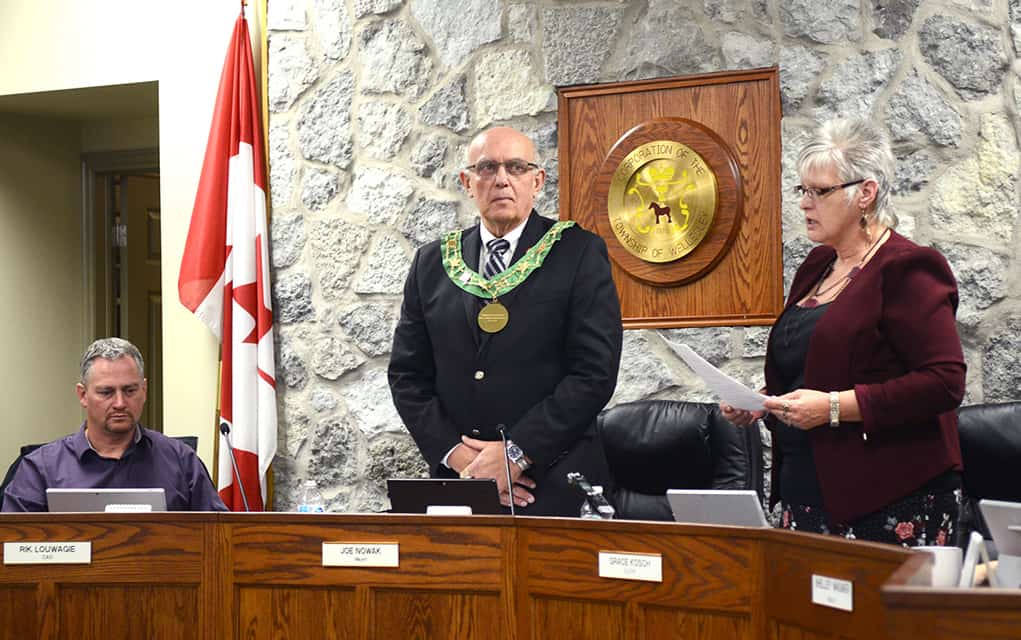A recent purchase of 212-acres of farmland in Breslau is being described as a strategic investment in the region’s airport. Approved last month by Waterloo Region council, the $5.1-million purchase is being earmarked for a planned extension to the airport’s crosswind runaway, which the region says is needed to improve current air service and attract new carriers.
The current crosswind runway, which acts as an alternative landing spot for aircraft during unfavourable wind conditions, is too small to accommodate some of the larger aircraft coming into Breslau, notes Rod Regier, the region’s commissioner of planning.
A strong crosswind is enough to force the larger aircraft landing in Breslau to make costly diversions to other airports.
“The issue of the crosswind runway is a service issue regardless of whether we have one flight or whether we have 20 flights a day. The other day, a WestJet flight was diverted to Hamilton because of a crosswind on a landing. So we need to have it regardless of the service we have,” said Regier. “The lengthening of runway 14-32 (the crosswind) is a matter of making sure we can consistently deliver a safe aviation experience to everybody.”
While the land has been purchased, there is no date set for construction on the runway extension. Expenditures on airport infrastructure are typically tied to the airport’s passenger count, with the airport having to hit certain targets before it gets additional funding. With every quarter-million added to the passenger-base, the airport triggers a new development stage.
The exception, however, is given for strategic investments like land purchases. The 212-acre purchase was for farmland on the north end of the crosswind runway, bounded by Fountain Street on the west side, Menno Street on the north, and the airport to the south and east. The acquisition followed two other purchases in the past year, including a $4.1-million purchase of a 144-acre plot on the south end.
“That land is on the southwest end of the airport. It’s located between Fountain Street and Kossuth , and it is a possible future location for the terminal building. We’re currently evaluating a number of options for the future of the terminal, and that was one possibility,” explained Reiger.
“In addition, we wanted to make sure we’re able to control the land from encroachment. To the south, we will see some additional urban development between Kossuth and towards Cambridge,” he added. “We’ll see some residential development and some industrial development down there, and we wanted to make sure that didn’t encroach upon the airport.”
The upfront expenditures on land, coupled with the yearly losses reported by the small airport – amounting to a $6 million expense, or 1.5 per cent of the tax levy – are expected by regional staff to payoff in the longer term.
Passenger counts have fluctuated significantly over the years as well, peaking at 153,000 in 2015, before dropping 25,000 in 2016 after the loss scheduled American Airlines flights to Chicago. The numbers are a far-cry from the 250,000 passengers needed for the next stage of development.
“However, we’re pretty confident that in the next year or two, we’re going to be seeing more air service. And the reason is that air service demand continues to grow in southern Ontario,” said Regier. “We have Pearson growing at an astonishing rate in terms of its passenger volume. We have three ULCC (ultra-low cost carriers) currently in expansion or development mode, plus Swoop, which is the fourth one, which is owned by WestJet and is currently flying out of Hamilton.”
Increasing demand at Pearson airport is expected to have some spillover into smaller neighbouring airports as the Toronto airport reaches its maximum capacity. Simultaneously, a rise in ULCC’s in Canada will likely benefit smaller airports as the inexpensive carriers search for savings that larger airports like Pearson can’t offer
“So the nature of air traffic – air passenger service – is changing quite quickly right now in southern Ontario,” said Regier.
The 212 acres of farmland are currently being rented out to producers while the Region of Waterloo International Airport looks to hit the 250,000 passengers needed to begin the first development stage of its master plan.









